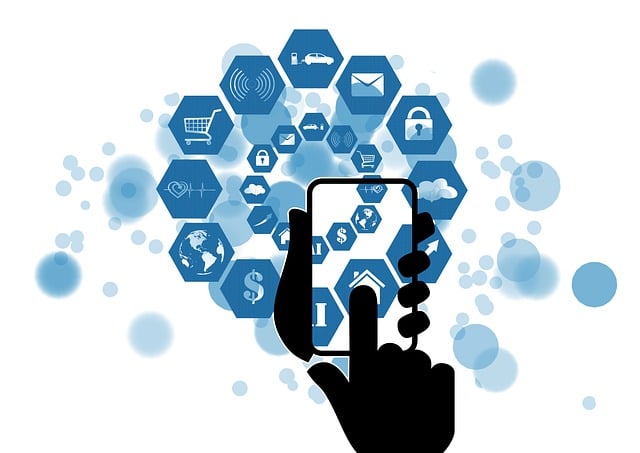Table of Contents
Key Benefits of Home Automation
With the rapid advancement of technology, home automation has become increasingly popular among homeowners. The convenience, efficiency, and security that smart devices offer are some of the key benefits of integrating automation into homes. By using smart technology, individuals can remotely control various aspects of their homes, such as lighting, heating, and security systems, providing ease and peace of mind.
Moreover, the energy-saving capabilities of smart home devices have a positive impact on both the environment and homeowners’ wallets. By automating heating, cooling, and lighting systems, energy efficiency is optimized, leading to reduced utility bills and a smaller carbon footprint. Additionally, the customization and integration of smart home devices allow for a seamless and connected living experience, enhancing overall comfort and convenience for homeowners.
• Improved convenience, efficiency, and security for homeowners
• Remote control of lighting, heating, and security systems
• Energy-saving capabilities leading to reduced utility bills
• Smaller carbon footprint due to optimized energy efficiency
• Customization and integration for a seamless living experience
• Enhanced comfort and convenience for homeowners with connected smart devices
How Smart Technology is Revolutionizing Everyday Life
Smart technology has swiftly woven itself into the fabric of our everyday lives, reshaping the way we interact with our surroundings. From the moment we wake up to the time we lay our heads to rest, the seamless integration of smart devices has streamlined our routines and heightened our efficiency. Tasks that once demanded our undivided attention now hum along in the background, freeing up valuable mental space for more meaningful pursuits.
As we navigate the labyrinth of our modern existence, smart technology acts as a guiding beacon, illuminating pathways to increased convenience and connectivity. The once mundane act of turning on lights or adjusting the thermostat is now a simple voice command away, effortlessly bridging the gap between intention and action. With each swipe, tap, or spoken word, the boundaries of possibility expand, ushering in a new era where the pulse of innovation beats in harmony with the rhythm of our daily lives.
Popular Smart Home Devices on the Market
Smart home devices have become increasingly popular in recent years, offering homeowners a greater level of convenience and control over their living spaces. One of the most sought-after devices on the market is the smart thermostat. These devices allow users to remotely control their home’s temperature, set schedules, and even learn from your habits to optimize energy usage. Brands like Nest and Ecobee have gained significant traction in the market, offering sleek designs and user-friendly interfaces.
Another popular smart home device that has gained widespread adoption is the smart security camera. With features like motion detection, two-way audio, and live streaming capabilities, these cameras provide homeowners with peace of mind and added security. Brands such as Ring, Arlo, and Google Nest offer a range of options to suit different needs and budgets, making it easier than ever to keep an eye on your home when you’re away.
Security Features of Smart Home Devices
One crucial aspect of smart home devices is the security features they offer to homeowners. With the rise of connected technologies in our living spaces, ensuring the protection and privacy of personal data has become a top priority. Many smart home devices come equipped with advanced encryption protocols and secure authentication methods to safeguard against unauthorized access and potential cyber threats. These security measures provide users with peace of mind, knowing that their homes and sensitive information are well-protected in the digital realm.
Moreover, smart home devices often offer features such as real-time monitoring and notifications, allowing homeowners to stay informed about the status of their property even when they are away. In the event of suspicious activity or breaches, smart security systems can immediately alert users and provide them with the necessary tools to take action swiftly. By incorporating cutting-edge security technologies into everyday devices, smart homes empower individuals to take control of their safety and create a more secure living environment for themselves and their loved ones.
Energy Efficiency with Smart Home Technology
Home automation has swiftly gained popularity due to its ability to enhance energy efficiency in households. Smart home devices such as programmable thermostats, smart lighting systems, and energy-monitoring tools enable users to regulate energy consumption more effectively. By automating heating, cooling, and lighting systems, homeowners can optimize energy usage and reduce their utility bills significantly.
Moreover, the integration of smart home technology allows for remote monitoring and control of energy-consuming devices. Through smartphone applications or voice commands, users can adjust settings and turn off appliances when not in use, contributing to a more energy-efficient household. This level of convenience and control not only improves energy efficiency but also promotes a more sustainable lifestyle for homeowners.
The Role of Artificial Intelligence in Home Automation

Artificial intelligence (AI) plays a pivotal role in home automation, enhancing the efficiency and intelligence of various smart devices. Through machine learning algorithms, AI enables smart home systems to adapt to residents’ behaviors and preferences, providing personalized experiences for enhanced comfort and convenience. By incorporating AI into devices like smart thermostats and lighting systems, homeowners can enjoy automated adjustments that optimize energy usage and create a more comfortable living environment.
Moreover, AI-powered virtual assistants, such as Amazon’s Alexa and Google Assistant, have become integral parts of smart homes, offering voice-controlled access to information and smart device control. These virtual assistants utilize AI to understand and respond to natural language commands, allowing users to interact with their smart homes effortlessly. As AI continues to advance, the integration of artificial intelligence in home automation will further streamline daily tasks and enhance the overall living experience for homeowners.
Voice Control and Virtual Assistants in Smart Homes
Voice control and virtual assistants have become integral parts of modern smart homes. With just a simple voice command, homeowners can control various devices, set reminders, or even ask for information. Popular virtual assistants like Amazon Alexa and Google Assistant are designed to make everyday tasks more convenient and efficient. The seamless integration of voice control technology into smart home devices enhances the overall user experience, allowing for hands-free operation and effortless management of connected gadgets.
In addition to the convenience factor, voice control and virtual assistants also play a key role in enhancing home security. Homeowners can use voice commands to lock doors, arm security systems, or even check live camera feeds, providing a sense of safety and peace of mind. The ability to control security features hands-free adds an extra layer of protection to the smart home ecosystem, making it easier for residents to monitor and secure their living spaces at all times.
How Smart Thermostats Improve Comfort and Save Money
Smart thermostats are a game-changer when it comes to enhancing the comfort levels in your home. With features like remote temperature control and the ability to learn your preferences, these devices ensure that your living space is always at the perfect temperature. Whether you prefer a cozy environment in the winter or a cool retreat in the summer, smart thermostats allow you to customize your comfort effortlessly. The convenience they offer in adjusting temperature settings from anywhere not only increases comfort but also saves you from the hassle of constantly tinkering with manual thermostats.
Moreover, the cost-saving potential of smart thermostats cannot be overlooked. By intelligently regulating your home’s temperature based on your habits and preferences, these devices help optimize energy usage. This not only results in lower utility bills but also reduces your environmental footprint by promoting energy efficiency. With features like energy usage reports and smart scheduling, smart thermostats empower you to make informed choices that benefit both your wallet and the planet.
Integration of Smart Home Devices for Seamless Control
The interconnectedness of smart home devices allows for seamless control and automation of various functions within the household. By integrating devices such as smart lights, thermostats, security cameras, and virtual assistants, homeowners can create a unified system that responds to their needs and preferences. This integration enables users to control multiple devices simultaneously through a central hub or smartphone app, providing convenience and efficiency in managing their living spaces.
Moreover, the ability to link different smart home devices fosters a more cohesive and synchronized environment. For instance, motion sensors can trigger lights to turn on automatically, while smart thermostats can adjust the temperature settings based on occupancy patterns detected by security cameras. As these devices work in harmony, users experience a more intuitive and personalized home environment that enhances their comfort and convenience. The seamless control offered by integrated smart home devices not only simplifies daily routines but also opens up possibilities for greater customization and optimization of energy usage within the household.
The Future of Home Automation: Trends to Watch
As technology advances, the future of home automation is set to bring about exciting trends that will further enhance the convenience and efficiency of smart homes. One trend to watch is the integration of augmented reality (AR) and virtual reality (VR) technologies into smart home devices, allowing users to visualize and interact with their automated systems in immersive ways. This development has the potential to revolutionize how homeowners monitor and control their homes, making the user experience more intuitive and engaging.
Additionally, the adoption of 5G technology is anticipated to have a significant impact on the future of home automation. With faster and more reliable internet connectivity, smart home devices will be able to communicate and function seamlessly, opening up possibilities for more complex automation setups and improved overall performance. The speed and low latency of 5G networks will pave the way for a new era of interconnected smart devices that can respond instantaneously to commands, providing a more responsive and efficient smart home experience for users.
Health and Wellness Benefits of Smart Home Devices
Smart home devices offer a unique advantage when it comes to promoting health and wellness. With the ability to monitor air quality, smart air purifiers can help reduce allergens and pollutants in your home, creating a cleaner and healthier living environment. Additionally, smart thermostats can regulate the temperature in your home, ensuring optimal comfort levels which can impact overall well-being positively.
Moreover, smart home devices can also assist in maintaining a healthy lifestyle by providing reminders for daily tasks such as staying hydrated or taking medication. For example, smart water bottles can track your water intake and send hydration reminders throughout the day, promoting better health habits. These devices can seamlessly integrate into your daily routine, making it easier to prioritize your health and well-being.
Customizing Your Smart Home to Fit Your Lifestyle
Personalizing your smart home to align with your unique lifestyle is key to maximizing the benefits of this innovative technology. With the plethora of smart devices available on the market today, you have the flexibility to choose the ones that best suit your daily routines and preferences. Whether you prioritize convenience, security, energy efficiency, or all of the above, customizing your smart home allows you to create a personalized environment that caters to your specific needs.
Consider your habits and routines when selecting smart devices for your home. Do you prefer a seamless, hands-free experience? Opt for voice-controlled assistants that can manage tasks and answer questions with just a simple command. For those who value security, investing in smart locks, cameras, and motion sensors can provide peace of mind and ensure your home is always protected. By tailoring your smart home setup to fit your lifestyle, you can enjoy the convenience and efficiency that these devices offer while enhancing the overall functionality of your living space.
Tips for Setting Up a Smart Home System
Setting up a smart home system can be both exciting and daunting for many individuals. To ensure a smooth and successful installation process, it is essential to first determine your specific needs and priorities. Consider factors such as the size of your living space, the number of devices you plan to incorporate, and your primary objectives. This initial planning stage will help you create a roadmap for setting up your smart home in a way that aligns with your lifestyle and goals.
When selecting smart home devices, it is crucial to choose products that are compatible with each other and can be easily integrated into a cohesive system. Research different brands and models to find devices that offer the functionalities you desire while also providing seamless connectivity. Opting for devices that support industry-standard protocols, such as Zigbee or Z-Wave, can help ensure interoperability and make it easier to control multiple devices through a single interface. By investing time in researching and selecting the right products for your smart home setup, you can avoid compatibility issues and set the foundation for a smart home ecosystem that suits your needs.

